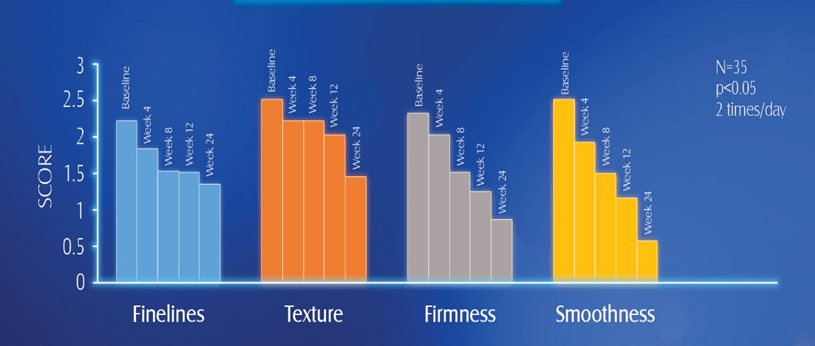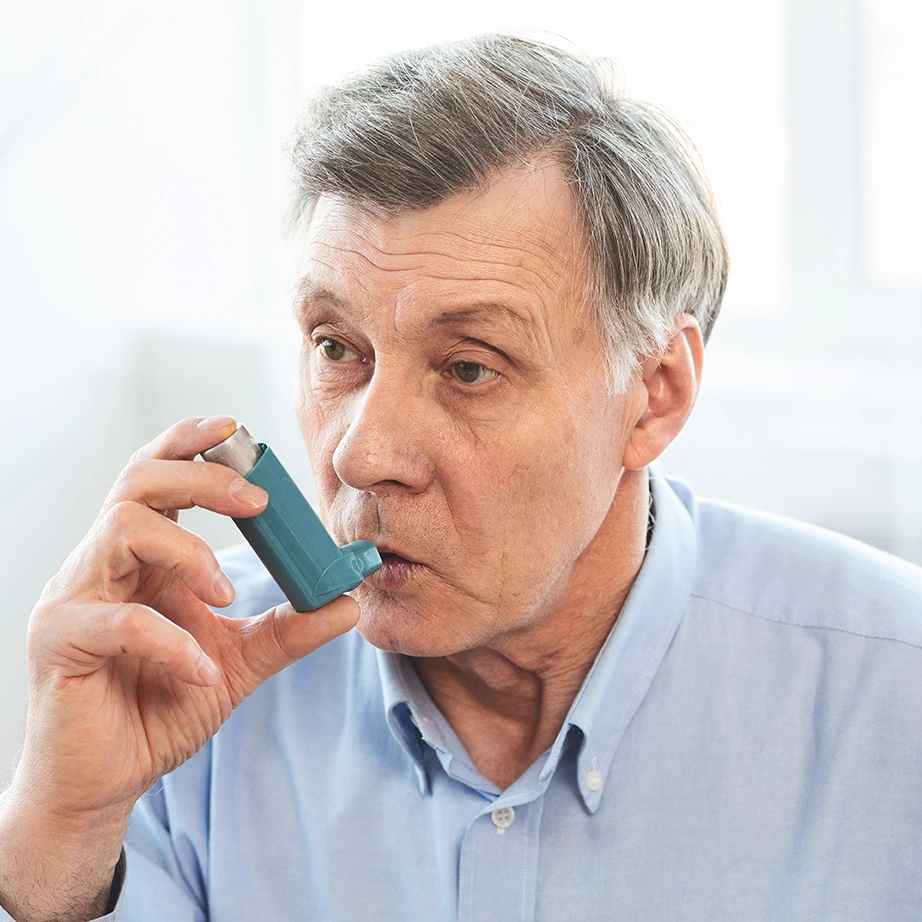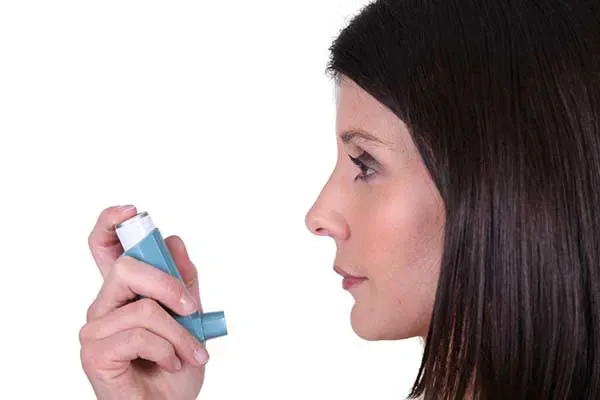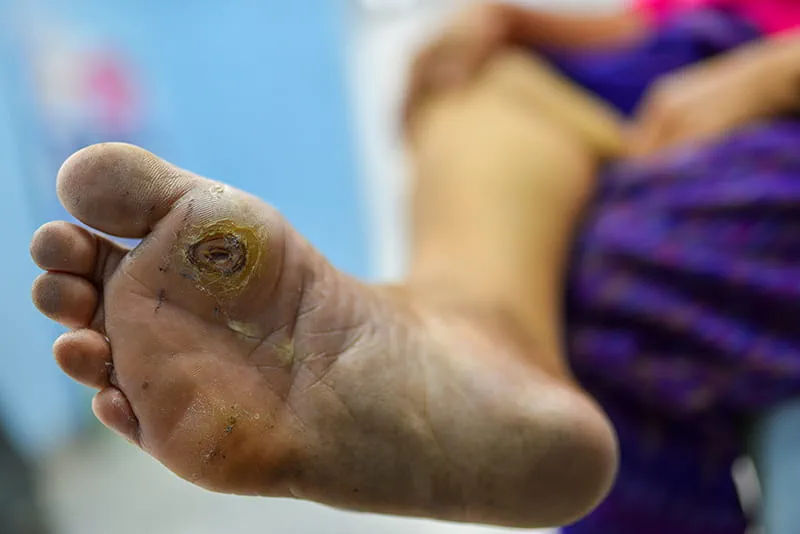Overview of VC X (Vitamin C + Vitamin E + Ferulic acid)
1. What is VC X?
VC X is a serum containing 15% L-ascorbic acid (vitamin C), 1% alpha tocopherol (vitamin E) and 0.5% ferulic acid. It is enriched with arganyl extract.
2. What is the science supporting topical antioxidants?
Environmental factors such as sunlight, smoke, and air pollution produce free radicals in the skin. These free radicals damage the skin’s cellular structures viz. lipids, proteins and nucleic acids. They also lead to depletion of the natural protective antioxidants of the skin.1
Oral supplementation delivers a limited amount of antioxidants to the skin as it is affected by factors such as absorption, solubility, and transport. Hence, a topical antioxidant therapy is preferred for the treatment of photoageing.
VC X serum is a topical combination of antioxidants which aims at introducing these antioxidants directly to the skin.2
3. What are the properties of Vitamin C?
Vitamin C is a water soluble vitamin and L-ascorbic acid is the active form of Vitamin C. It has the following properties:
Antioxidant
- Sequentially donates electrons, thereby neutralizing free radicals present in the aqueous compartment of the cell.3
- Vitamin C also helps to regenerate the activity of oxidized vitamin E 1
Collagen Synthesis
- It is a cofactor required for stabilizing and cross linking of collagen.4
- Directly stimulates collagen synthesis by activating its transcription and stabilizing procollagen messenger ribonucleic acid (mRNA) 1
- Vitamin C has also shown to down regulate the enzymes responsible for collagen degradation.3
Photo-protection
- Vitamin C is a proven photoprotective.5
- It acts as an antioxidant deactivates UV-induced free radicals and also decreases UVB induced erythema.6
Anti-inflammatory
- Vitamin C suppresses the activation of transcription factor, NF-?? which is responsible in production of proinflammtory cytokines1
Depigmentation
- Inhibits the enzyme tyrosinase responsible for melanin production.4
- By directly decreasing inflammation reduces post inflammatory hyperpigmentation.7
Moisturisation
- Stimulates the synthesis of sphingolipids
- Enhances protective barrier function1
4. What are the properties of Vitamin E?
Vitamin E (?-tocopherol) is body’s major lipid soluble antioxidant. It has the following roles:
Antioxidant
- Scavenges the free radicals, and prevents damage to lipid cell membrane.8 Ends chain reaction damage in membranes caused by free radicals.9
Anti-inflammatory
- Vitamin E has reported to decreases inflammation.10
Depigmentation
- Vitamin E inhibits melanin synthesis, possibly through inhibition of the enzyme tyrosinase.4
Moisturisation
- It may increase stratum corneum hydration and water binding capacity.11
Photoprotection
Vitamin E is abundant in the stratum corneum and serves as the first line of defense against oxidative stress of sunlight and pollutants.12
5. What are the properties of Ferulic acid?
Ferulic acid derives its name from ferula foetida. It is a potent antioxidant found in plant cell walls and is common in foodstuffs like rice, wheat, oats, coffee, orange, apple, pineapple.
The following are the properties of ferulic acid:
Antioxidant
- Ferulic acid can protect membranes from lipid peroxidation, neutralize free radicals and prevent the damage induced by free radicals.,4,13
Photoprotection
- Due to the highly unsaturated structure of ferulic acid it functions similar to organic sunscreens, absorbs UVR and converts it to heat by resonance delocalization.14
6. What is the rationale behind combining the three ingredients (Vitamin C, E and Ferulic acid) in VC X?
Advanced Photoprotection
- In cells, vitamin C and E interact synergistically to provide antioxidant protection. When mixed with vitamins C and E, ferulic acid acts synergistically to double the photoprotection from fourfold to eightfold.1
Stability
- Ferulic acid stabilizes the formulation containing vitamin C and E. Addition of ferulic acid provided a stability of more than 90% for L-ascorbic acid and 100% for ?-tocopherol.15
Regeneration of Vitamin E
- Intracellular vitamin C reduces vitamin E to regenerate its activity so it need not be replaced in the membrane.1
7. Are there clinical evidence demonstrating the photo protective effects/ efficacy of the combination in VC X?
A few clinical evidences have been outlined here as follows:
I. Effect of Ferulic Acid in Combinations with Vitamin C and E to Improve Facial Photodamage 14
In this single center study 35 healthy, nonpregnant females (30 to 60 years) were enrolled. The trial was conducted to determine the ability of ferulic acid in combination with vitamins C and E to improve facial photodamage. Assessment was done on the basis of investigator, subject, dermospectrophotometer, skin elasticity, and profilometry at baseline and weeks 4, 8, 12, 18, and 24; while compliance was evaluated from subject diaries.
A. Investigator Assessment
- Statistically significant improvements were noted in skin texture (P=0.049), firmness (P=0.005), and smoothness (P<0.001) in 4 weeks and in fine lines by 8 weeks (P=0.032).
- The investigator efficacy data continued to improve at week 12, 18 and 24.
- At 24 weeks, statistically significant improvement was noted in all the assessment parameters.
B. Dermospectrophotometer Assessments
- A serum formulation composed of Ferulic acid combined with vitamins C and E did not produce inflammation in normal or self-perceived sensitive skin, at any time during the study.
C. Skin Elasticity Assessment
- Although not statistically significant there was a trend towards improved elasticity.
D. Profilometry/ Silicone Replica Assessment
- Profilometry assessments demonstrated significant conversion of deep wrinkles to fine wrinkles.
- There was a significant reduction in wrinkle spacing (the lines that run parallel to the crow’s feet) compared to baseline, at weeks 12 (P=0.045), 18 (P=0.007), and 24 (P=0.042).
- A statistically significant reduction in wrinkle spacing was also seen in the lines that run at right angles to the crow’s-feet at weeks 12 (P=0.024) and 18 (P=0.040).
Conclusion
The combination of ferulic acid with vitamins C and E in a cleanser and treatment serum demonstrated statistically significant improvement in fine lines, texture, firmness, and smoothness after 24 weeks when used twice daily.
II. Effect of Topical Antioxidant Solution Containing Vitamins C and E and Ferulic Acid in Photoprotection 16
This study was carried out on nine adults who were administered *CEFer or control treatment to separate patches of the back skin (2 mg/cm2 area) for four days. On the 4th day irradiation of skin patches using 1000-W xenon solar simulator was carried out. A day later assessment of the skin was carried out for erythema (colorimetry) and sunburn cells (biopsy).
A. Erythema
*(CEFer) = A formulation containing 15% L-ascorbic acid, 1% dl-? tocopherol, and 0.5%transferulic acid
*CEFer provided significant protection against UV-induced erythema when compared to vehicle at all irradiance levels, (p<0.01).
B. Sunburn Cell Enumeration
Analysis of Sunburn cell enumeration revealed that *CEFer provided significant protection against UV rays compared to vehicle (CEFer 8.4 ± 7 vs vehicle 31.5 ±14.3)
Conclusion
A combination of 15% L-ascorbic acid, 1% dl-a tocopherol, and 0.5%transferulic acid provided substantial photoprotection to the skin.
8. How does VC X help the skin?
|
Clinical uses |
Properties |
Ingredients responsible |
|
Dry skin |
Moisturisation |
Vitamin C , E |
|
Dull complexion rough texture |
Synergistic photoprotection and antioxidant effects |
Vitamin C, E and Ferulic acid |
|
Fine lines and wrinkles |
Collagen synthesis and antioxidant action |
Vitamin C and E |
|
Age spots |
Depigmentation and photoprotection |
Vitamin C, E and Ferulic acid |
|
Skin pigmentation |
Depigmentation and photoprotection |
Vitamin C, E and Ferulic acid |
9. What is the advantage of arganyl extract?
VC X comes with an added advantage of arganyl extact, it contains flavonoids extracted from the leaves of Argan tree.
Argan extract has the following role in photoaging:
- Antioxidant-The structure of flavonoids, enables them to effectively capture the free radicals and fight photo-aging
- Prevents collagen degradation- has Anti-MMP and anti-collagenase activity to improve skin firmness. 17
10. Why is VC X available as a serum formulation?
Generally serums are clear, thick liquids which are mostly water-based. Most skin types can use water-based serums. A serum formulation can penetrate into the deeper layers of the skin. To achieve maximum benefits, VC X is available as a serum formulation.
11. Who can use VC X?
Individuals with signs of photodamaged/ageing skin (dryness, dull complexion, rough texture, fine lines, wrinkles, age spots) and melasma/hyperpigmentation can benefit from VC X.
12. What is the dosage and administration of VC X?
VC X is to be applied once daily in the morning? 4-5 drops of VC X are to be taken onto the fingertips, dabbed on the face and gently massaged to the face and neck till it is completely absorbed.
13. What are the side effects associated with Vitamin C, E, Ferulic acid?
The side effects that may occur with the use of Vitamin C, E, Ferulic acid combination is slight tingling or stinging sensation, rash, itching, burning sensation and redness. Some may develop contact dermatitis. Caution should be exercised if you are allergic to any kind of grains, such as wheat, barley or corn.
14. What are the warnings and precautions of VC X?
- VC X is meant for external use only.
- Direct contact with the eyes or mucous membranes should be avoided.
- Due to the high concentration of ascorbic acid, there may be a temporary tingling or stinging sensation after applying the product. If this occurs, patient should avoid using the product on the most sensitive facial areas including the sides of the nose and around the eyes.
References
1.Burke KE. Interaction of Vitamins C and E as Better Cosmeceuticals. Dermatol Ther. 2007 Sep-Oct;20(5):314-21.
2.Pinnell SR. Cutaneous Photodamage, Oxidative Stress, and Topical Antioxidant Protection. J Am Acad Dermatol. 2003 Jan;48(1):1-19; Quiz 20-2.
3.Farris PK. Topical Vitamin C: A Useful Agent for Treating Photoaging and Other Dermatologic Conditions. Dermatol Surg. 2005 Jul;31(7 Pt 2):814-7; Discussion 818.
4.Sheldon RP et al. Review of Photodamage and Oxidative Stress and Protection Provided by Topical Antioxidants. European Dermatology;2010, Vol. 5, P32-5.
5.Pappas A. Nutrition and Skin: Lessons for Anti-Aging, Beauty and Healthy Skin. Springer Science & Business Media; 2011. p 230 .
6.Darr D. Topical Vitamin C Protects Porcine Skin From Ultraviolet Radiation-Induced Damage. Br J Dermatol. 1992 Sep;127(3):247-53.
7.Dayan N. Skin Aging Handbook: An Integrated Approach to Biochemistry and Product Development. William Andrew; 2008. p 852.
8.Huang CK et al. The Truth about Over-The-Counter Topical Anti-Aging Products: A Comprehensive Review. Aesthet Surg J. 2007 Jul-Aug;27(4):402-12; Quiz 413-5
9.Zouboulis CC, Katsambas A, Kligman AM. Pathogenesis and Treatment of Acne and Rosacea. Springer; 2014. p 729.
10. Burgess C .Topical Vitamins. J Drugs Dermatol. 2008 Jul;7(7 Suppl):S2-6.
11. Singhal M et al. Cosmeceuticals for the Skin: An Overview. Asian J Pharm Clin Res. 2011;4 (2): 1-6.
12. Lin JY et al, UV Photoprotection by Combination Topical Antioxidants Vitamin C and Vitamin E. J Am Acad Dermatol. 2003 Jun;48(6):866-74.
13. Wu Y et al. Protective Effects of a Topical Antioxidant Complex Containing Vitamins C and E and Ferulic Acid Against Ultraviolet Irradiation-Induced Photodamage in Chinese Women. J Drugs Dermatol. 2013 Apr;12(4):464-8.
14. Zoe DD et al. Efficacy of Ferulic Acid in Improving the Appearance of Photoaged Skin. Cosmetic Dermatology 2008 April; 21(4): 195-198
15. Lin FH et al. Ferulic Acid Stabilizes a Solution of Vitamins C and E and Doubles its Photoprotection of Skin. J Invest Dermatol. 2005 Oct;125(4):826-32.
16. Murray JC et al. A Topical Antioxidant Solution Containing Vitamins C and E Stabilized by Ferulic Acid Provides Protection for Human Skin against Damage Caused by Ultraviolet Irradiation. J Am Acad Dermatol. 2008 Sep;59(3):418-25.
17. Available from :http://www.bsibusiness.com/uploads/product_ls/pdf/8_pdf.pdf/ last accessed on 14/7/15













